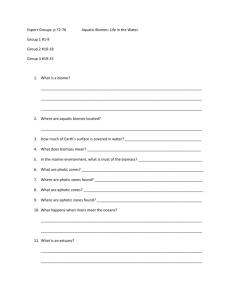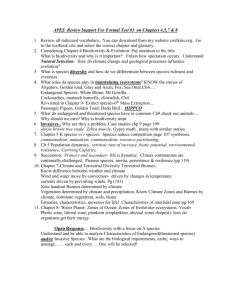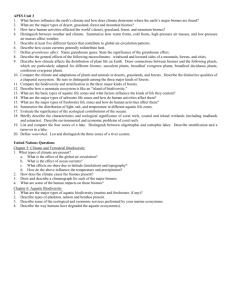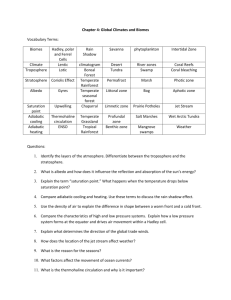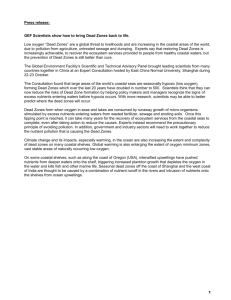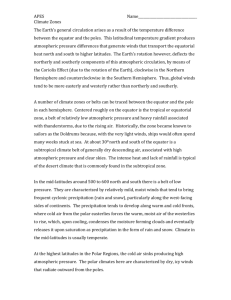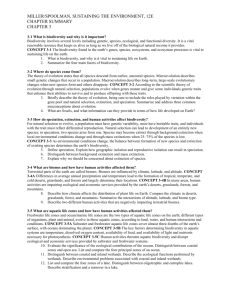Bio 9: Environmental Biology Study Guide for Chapter 5 of Chiras
advertisement
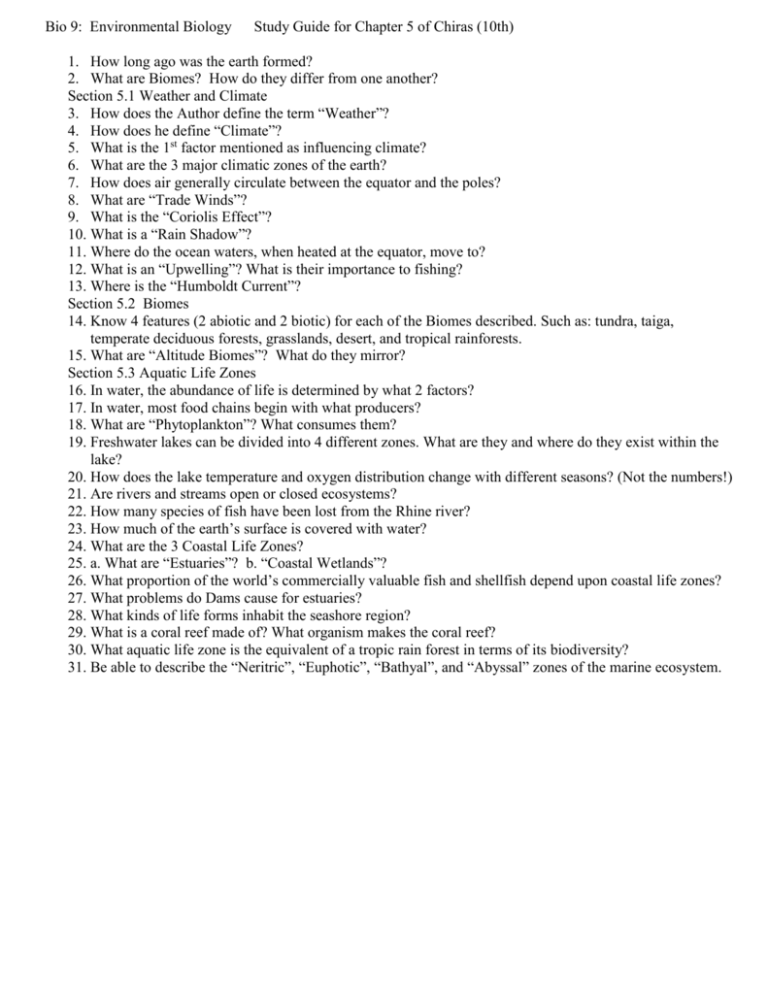
Bio 9: Environmental Biology Study Guide for Chapter 5 of Chiras (10th) 1. How long ago was the earth formed? 2. What are Biomes? How do they differ from one another? Section 5.1 Weather and Climate 3. How does the Author define the term “Weather”? 4. How does he define “Climate”? 5. What is the 1st factor mentioned as influencing climate? 6. What are the 3 major climatic zones of the earth? 7. How does air generally circulate between the equator and the poles? 8. What are “Trade Winds”? 9. What is the “Coriolis Effect”? 10. What is a “Rain Shadow”? 11. Where do the ocean waters, when heated at the equator, move to? 12. What is an “Upwelling”? What is their importance to fishing? 13. Where is the “Humboldt Current”? Section 5.2 Biomes 14. Know 4 features (2 abiotic and 2 biotic) for each of the Biomes described. Such as: tundra, taiga, temperate deciduous forests, grasslands, desert, and tropical rainforests. 15. What are “Altitude Biomes”? What do they mirror? Section 5.3 Aquatic Life Zones 16. In water, the abundance of life is determined by what 2 factors? 17. In water, most food chains begin with what producers? 18. What are “Phytoplankton”? What consumes them? 19. Freshwater lakes can be divided into 4 different zones. What are they and where do they exist within the lake? 20. How does the lake temperature and oxygen distribution change with different seasons? (Not the numbers!) 21. Are rivers and streams open or closed ecosystems? 22. How many species of fish have been lost from the Rhine river? 23. How much of the earth’s surface is covered with water? 24. What are the 3 Coastal Life Zones? 25. a. What are “Estuaries”? b. “Coastal Wetlands”? 26. What proportion of the world’s commercially valuable fish and shellfish depend upon coastal life zones? 27. What problems do Dams cause for estuaries? 28. What kinds of life forms inhabit the seashore region? 29. What is a coral reef made of? What organism makes the coral reef? 30. What aquatic life zone is the equivalent of a tropic rain forest in terms of its biodiversity? 31. Be able to describe the “Neritric”, “Euphotic”, “Bathyal”, and “Abyssal” zones of the marine ecosystem.


